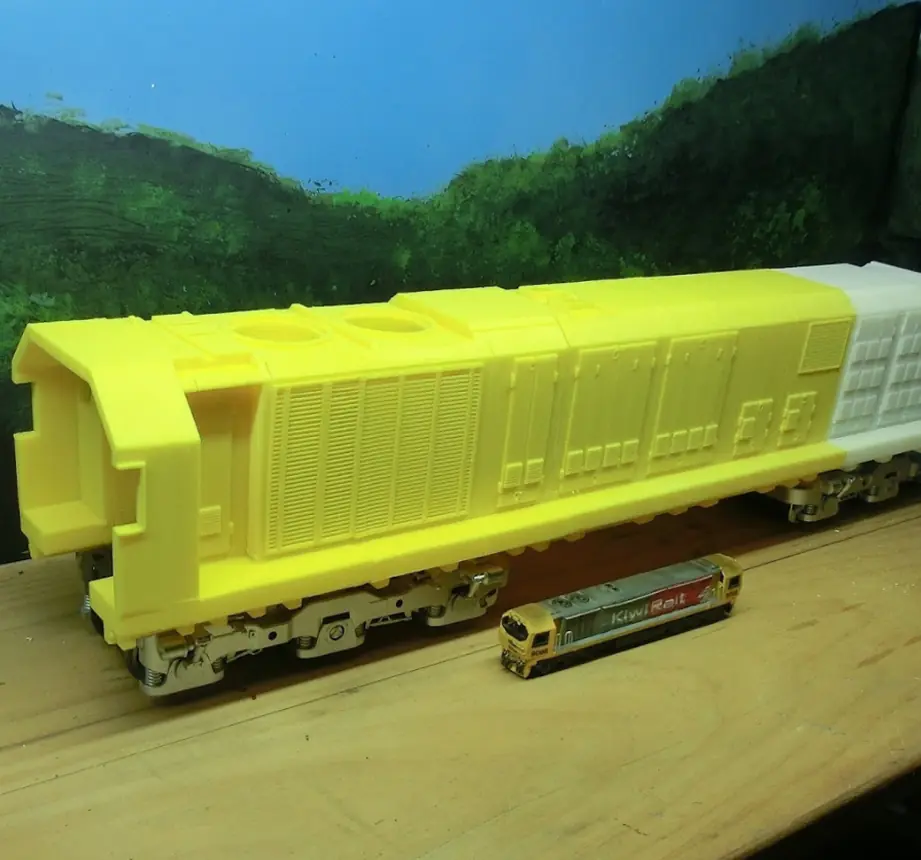To say 3D printing is the future of transportation may be a claim too bold. Over the next couple of years however, the involvement of additive manufacturing in just about every technology is inevitable. In the past decade, we witnessed the many ways in which 3D printing reformed the automotive and aeronautic landscape, delivering durable end-use parts that allow for lightweight production, fuel savings and spare part availability. Only recently, urban transportation in the form of rail, has gotten aboard the many opportunities that 3D printing offers. Here’s all the prospects and great ways 3D printing can contribute to the advancement of the railway transportation.
Additive Benefits for Rail
The railway transport system is one of the most staple means of mobility in the world. In some countries, rail covers over 80 percent of the general population, with more citizens opting for the subway than driving cars. The need for high-quality parts with super strength cannot be overlooked. 3D printing’s biggest qualities of low-volume manufacturing, production leadtimes and non-obsoleteness. All of these coupled with the ability to use 3D printing to deliver body components with lower weight and higher strength makes it well ripe for the demands of the rail industry. Let’s take a closer look at how 3D printing will deliver in the railway industry.
3D Printed spare parts
In one of our posts, we detailed how 3D printing was driving the automotive industry with real-life examples from some of the top brands. Porsche classic for instance, uses 3D printing to get older, classic models that have no spare parts available on the market, back to the drive way. How? With 3D printing, functional end-use parts can be printed and fitted as replacements for their classic cars on demand.
For rail, heavy and expensive spare parts that will usually take longer to manufacture, fulfil and ship can be manufactured in significantly shorter times as soon as the 3D model of such part is available. The downtimes for railway is unbelievable. An out-of-service coach can mean a loss in revenue to the tune of $20,000 per day. Instances like this highlight the essence of having in-house or quick outsource 3D-printing centers that can save . millions in dollars by preventing or reducing downtimes when transporters await their spare parts.
Another reason why 3D printing is important in rail replacement parts is the heavy costs of inventory required to service a machine that will be in function for at least 20 years. Consider the warehouse, shrinkage, insurance, defect and depreciation costs associated with stocking and holding these parts for the lifespan of the train. As explained by Brickwede, Head of 3D manufacturing at Deutsche Bahn, most trains will offer a service-level agreement covering spare parts for around 15 years. As soon as that time is up, we have to look elsewhere for these spare parts in the world market. Often, these parts will be unavailable. With 3D printing, the railway industry can do away with all its downtime and spare part challenges, printing highly durable replacements parts at a relatively lower price and in a fraction of the time it will take conventional manufacturing.
3D Printed Train
Asides making it possible to obtain obsolete and/or expensive spare parts at breakneck speed and lower costs, 3D printing service may be employed in the direct production of train parts. Additive manufacturing can deliver on its lightweight promise that allows automotive vehicles to achieve lesser fuel consumption. This fuel efficiency and cost savings may be up to 70 percent in some instances. Through several design complexities, 3D printing can also help deliver more low-noise trains. The lack of tooling and conventional machining can also mean accelerate production times in the overall manufacture of new trains.
Safety and Environment
By exploring 3D printing, railway systems can mitigate significantly, the risk of manual labour. As additive manufacturing is an automated process, the risk of injuries and criticalities when tooling heavy spares and replacement parts for trains is removed. Away from human safety concerns, 3D printing is a green technology. What this means is lower carbon footprint for the rail industry and an estimated material savings of up to 60 percent extra.
Job Creation
The sustainability of 3D printing can help to create job opportunities in the rail industry. This will not only upgrade the current workforce but create new units that can help transform the business model in its entirety while reducing costs and driving efficiency.
Rail availability
Because of the relative speed of 3D printing to conventional repair practices, the seamlessness of additive manufacturing can translate to longer rail availability by cutting down on the time required for repair and refurbishments on railways. The lower cost and speed also means that railways portions can be refurbished in bits in a matter of hours, avoiding closures of routes and longer operation times.
Getting started with 3D printing?
Firstpart offers a wide range of 3D printing solutions for both personal, commercial, transportation and other industrial uses. Choose from a variety of printing options, filaments and finishes to produce high-quality parts that are suitable as production parts, prototypes or end-use devices. By simply contacting us, we can print and ship your parts to you anywhere in the world.
At Firstpart, we can help to optimize the performance of your design by including aesthetically-pleasing and highly-functional 3D design models, end parts, prototypes and product spares that ensures an excellent part performance and combine the production competence of CNC machines for amazing outcomes. Please do not hesitate to request a free quote to get started with your project!










